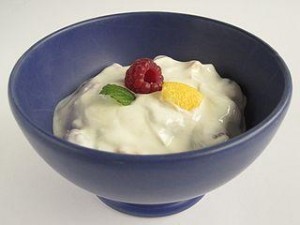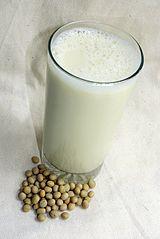Food To Eat and Avoid for Lactose Intolerance Diet
Lactose intolerance is one of the most common maldigestion problems in the world. Yet many people live with the condition and do not know that they have lactose intolerance, and may not even change their diet significantly to be symptom-free. But for those with a greater sensitivity to lactose, avoiding certain foods can keep the lactose intolerance symptoms at bay. Lactose intolerance is not associated with any major complications although some people who do not have a balanced diet may suffer with a calcium deficiency when dairy is stopped altogether.
What happens with lactose intolerance?
The human digestive system breaks down foods into simpler nutrients before it is absorbed. This is done primarily through the action of digestive enzymes secreted by salivary glands in the mouth, stomach, pancreas and small intestine. In lactose intolerance, a person has a deficiency of the enzyme lactase. It is responsible for chemically breaking down lactose.
When deficient, lactose remains in the gut in its original state. As a result it affects the water balance within the intestines, causes the intestinal walls to stretch and becomes fermented by the naturally-occurring bacteria in the bowels. Symptoms like nausea and sometimes vomiting, abdominal cramps, excessive gas, bloating and diarrhea then arises.
Risk of deficiencies in lactose intolerance
Lactose intolerance cannot be cured. There is no drug to increase the production of the enzyme lactase. Management of lactose intolerance therefore largely depends on a dietary approach. Dairy products have to be avoided or eaten in smaller quantities and some people may be at risk of nutritional deficiencies since they depend on dairy for different vitamins and minerals.
Vitamin D and calcium are two nutrients that may become deficient in the body. If left uncorrected it can lead to a reduction in the bone mineral density, a condition known as osteopenia. Therefore it is important to increase the intake of other foods in a person who is lactose intolerant and at risk of nutritional deficiencies by excluding dairy from the diet.
It is important to bear in mind that lactose intolerance is not likely to be a life-threatening condition and most people do not find it debilitating. Even the dietary management is minimal in most instances.
Eat less dairy and smaller servings
It is a common misconception that you should stay away from dairy entirely if you have lactose intolerance. Some people cannot tolerate even a small amount of dairy but most can eat dairy in moderation.The key is to eat less dairy than you normally would when you experience lactose intolerance symptoms.
Although it is advisable to not exceed about 100mL of dairy at a time, individual tolerance levels will vary. Also try not to have dairy for every meal or everyday. Some people find that the occasional intake of dairy is better tolerated than daily consumption. You have to test what works for you but the general rule is that less dairy means that you are less likely to experience symptoms.
Mix dairy with other foods at meals
Drinking a small glass of milk on its own may not be an option for people with lactose intolerance. Instead you should try to consume your diary along with other foods at meal time. This may slow down the digestive process and reduce the likelihood of symptoms arising. Once again moderation is important when consuming foods with lactose.
By mixing it with other foods, a person with lactose intolerance may still be able to gain all the nutritional benefit of dairy products without triggering the development of symptoms. Dairy may be better tolerated with some foods as compared to others and you should experiment a little to find a good combination.
Choose lactose-free foods and drinks
People with lactose intolerance do not have to feel that they are restricted in their choices of foods. Many foods and beverages contain milk and its derivatives. But there are just as many food and beverage options that do not contain lactose or are specially made for consumption in lactose intolerance. It requires a little effort on your part in choosing the lactose-free option.
Firstly you may be able to better tolerate low-fat or skimmed dairy products even though whole milk is not tolerated. This means that you do not have to choose lactose-free foods and drinks all the time. Secondly, rice and soy milk are not a problem and are used in many foods and beverages that traditionally contained dairy. Some people may be able to tolerate fermented dairy like yogurt because the lactose is already broken down.
Try OTC lactose enzyme supplements
There is no medication that can increase your naturally-occurring lactose enzymes. However, these days there are lactase enzymes available as tablets or drops that may be useful. These supplements contain the same lactase enzymes responsible for digesting lactose. It can be used just before a meal or the drops can be added to beverages.
Lactose enzyme supplements should only be used when lactose-containing foods and beverages are to be consumed. Unfortunately not every person with lactose intolerance may find relief by using these supplements. Dietary management is important even for people who do find benefit from using these supplements. Moderation in dairy consumption is still essential.
Supplement for calcium with other foods
Milk contains large amounts of calcium among other micronutrients. It also contains significant quantities of vitamin D. A person who is lactose intolerant and not consuming dairy at all needs to ensure that other foods are increased in their daily diet. Vitamin D is abundant in eggs and animal liver but it is also synthesized with sunlight exposure. The bigger issue lies with calcium.
Contrary to popular belief, dairy is not the only food which is rich in calcium especially for vegetarians. There are a number of different non-meat options that can provide sufficient calcium for people who have to avoid dairy. Broccoli, rhubarb and spinach are some of the vegetable options. Both rice milk and soy milk are also rich in calcium and many cereals, breads and juices are fortified with calcium.


